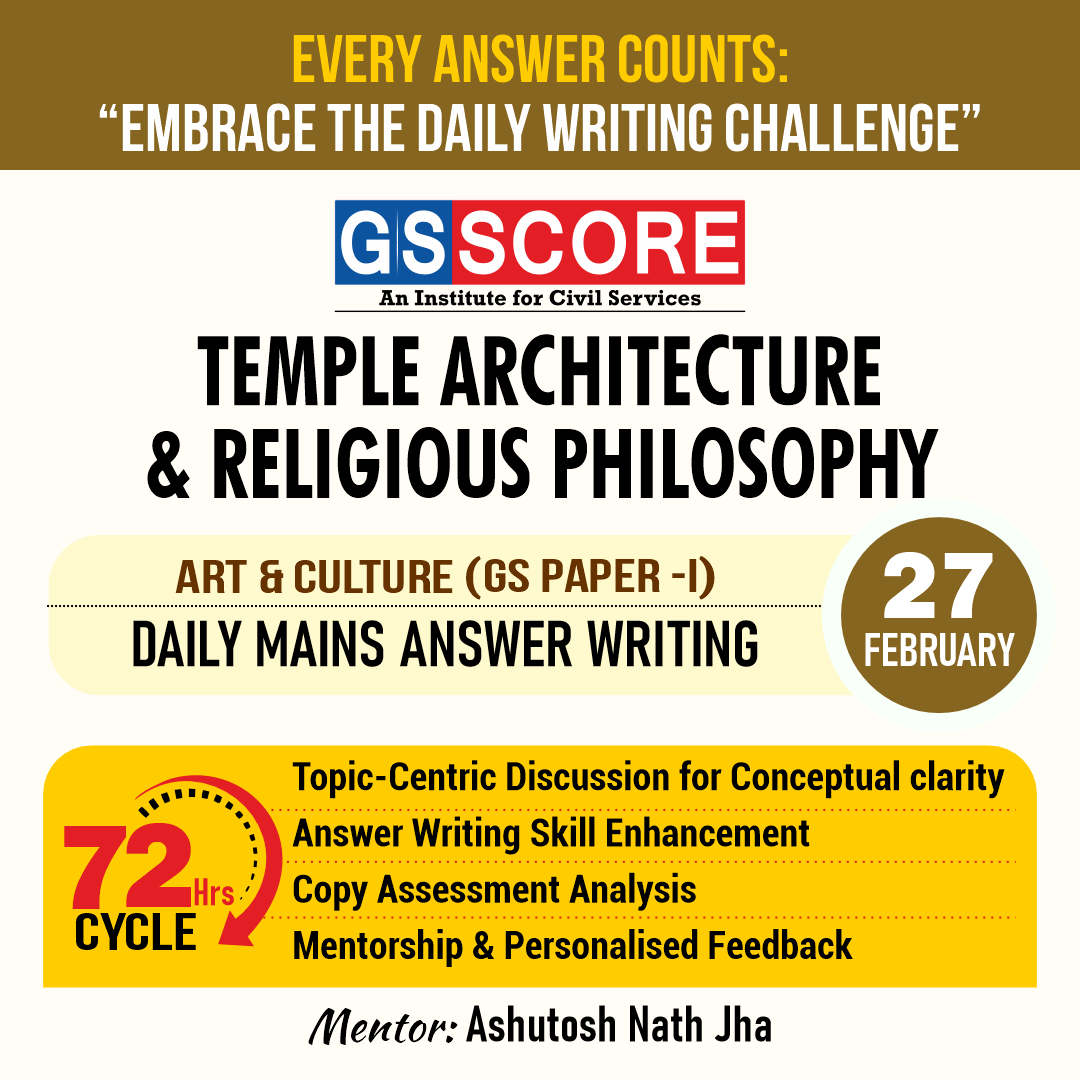


Instruction:
- There will be 2 questions carrying the First Question is-10 marks Write your answers in 150 words and the Second Question is-15 marks Write your answers in 250 words.
- Any page left blank in the answer-book must be crossed out clearly.
- Evaluated Copy will be re-uploaded on the same thread after 2 days of uploading the copy.
- Discussion of the question and one to one answer improvement session of evaluated copies will be conducted through Google Meet with concerned faculty. You will be informed via mail or SMS for the discussion.
Question #1. What fundamental differences distinguish the Nyaya and Vaisheshika schools of Indian philosophy, and how do their respective theories contribute to the understanding of reality? 10 marks (150 words)
Question #2. How did the amalgamation of indigenous styles and foreign influences contribute to the evolution of Indian architecture? Provide examples to support your answer. 15 marks (250 words)
(Examiner will pay special attention to the candidate's grasp of his/her material, its relevance to the subject chosen, and to his/ her ability to think constructively and to present his/her ideas concisely, logically and effectively).
STEPS & INSTRUCTIONS for uploading the answers
Step 1 - The Question for the day is provided below these instructions. It will be available at 7:00 AM.
Step 2 - Uploading of Answers : Write the answer in A4 Sheet leaving proper margins for comments and feedback and upload the PDF in MY ACCOUNT section. Click on the option of SUBMIT COPY to upload the PDF.
Step 3 - Deadline for Uploading Answers: The students shall upload their answers by 7:00 PM in the evening same day. The first 50 copies will be evaluated.
Step 4 - Feedback : Mentors will give their feedback for the answers uploaded. For more personalised feedback, join our telegram channel by clicking on the link https://t.me/mains_answer_writing_cse . A one-to-one session will be conducted with the faculty after copy evaluation in 72 Hrs.
Model Answer
Question #1. What fundamental differences distinguish the Nyaya and Vaisheshika schools of Indian philosophy, and how do their respective theories contribute to the understanding of reality? 10 marks (150 words)
The Nyaya and Vaisheshika schools of Indian philosophy share commonalities, yet diverge in their foundational principles. Nyaya emphasizes logic and epistemology, proposing that valid knowledge is obtained through inference, testimony, and perception. In contrast, Vaisheshika delves into metaphysics and atomism, asserting that the ultimate reality (paramanu) consists of indivisible particles.
Nyaya's logical rigor is evident in its syllogistic reasoning, known as anumana, which plays a crucial role in establishing valid knowledge. Vaisheshika, on the other hand, introduces a systematic classification of substances (dravya), with nine categories encompassing everything from atoms to souls.
An example illustrating their differences can be found in their interpretations of causation. Nyaya identifies five causes, including the material cause (upadana) and the efficient cause (nimitta), providing a comprehensive understanding of causality. In contrast, Vaisheshika recognizes only four causes, focusing primarily on the material cause.
while Nyaya focuses on the methodology of acquiring knowledge, Vaisheshika delves into the metaphysical fabric of reality, showcasing the diverse perspectives within the rich tradition of Indian philosophical thought.
Question #2. How did the amalgamation of indigenous styles and foreign influences contribute to the evolution of Indian architecture? Provide examples to support your answer. 15 marks (250 words)
The synthesis of indigenous architectural styles with foreign influences has been pivotal in the evolution of Indian architecture, resulting in a diverse and culturally rich landscape. One prominent example is the Indo-Islamic architecture that emerged during the medieval period. The Qutub Minar in Delhi exemplifies this fusion, blending Persian elements like the use of intricate calligraphy with traditional Indian motifs.
In Southern India, the Chola dynasty's temples showcase a unique amalgamation of Dravidian architecture with influences from Southeast Asia. The Brihadeshwara Temple in Thanjavur, with its towering vimana and intricate carvings, exemplifies this synthesis, reflecting both local and foreign aesthetic elements.
The Mughal architecture in Northern India is another testament to this amalgamation. The Taj Mahal, a UNESCO World Heritage site, combines Persian, Timurid, and Indian architectural styles. The use of the Persian dome and intricate geometric patterns on the marble facade demonstrates the integration of diverse influences.
Furthermore, the colonial period introduced European architectural elements to India. The Victoria Memorial in Kolkata is a striking example, showcasing a blend of British and Mughal architectural styles. The grand edifice with its white marble and red sandstone construction mirrors this fusion, reflecting the colonial influence on Indian architecture.
the synthesis of indigenous and foreign architectural styles has not only shaped the physical aesthetics but also symbolizes the cultural, religious, and historical amalgamation that defines the diverse architectural heritage of India.


